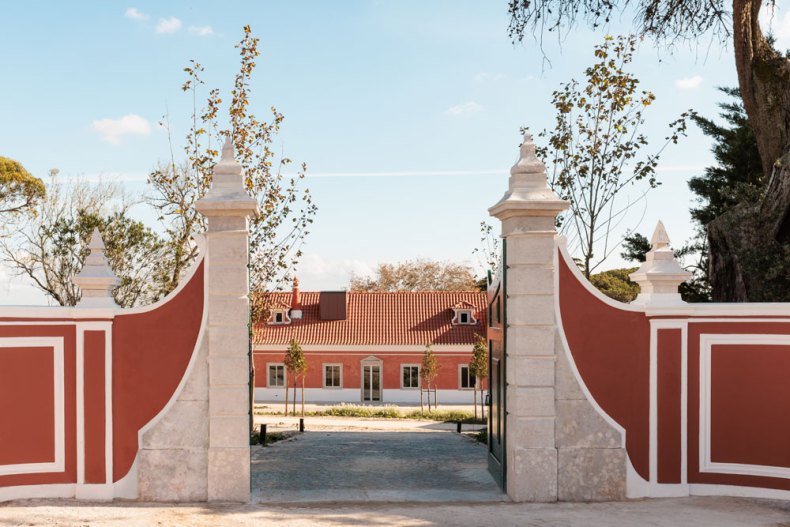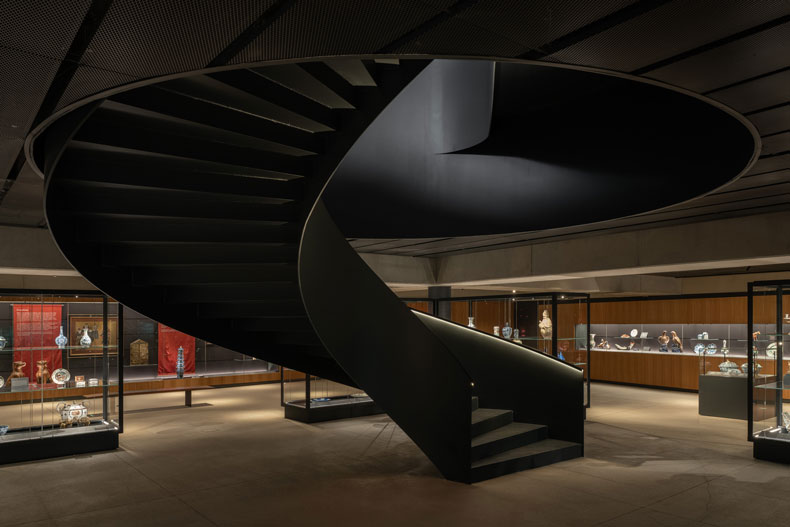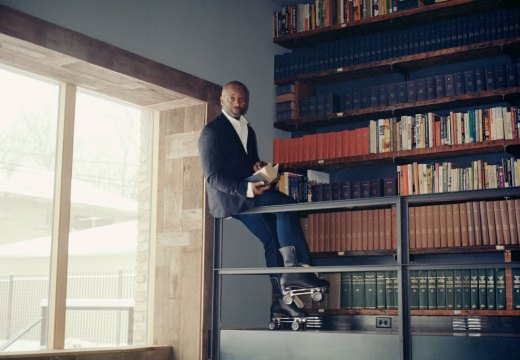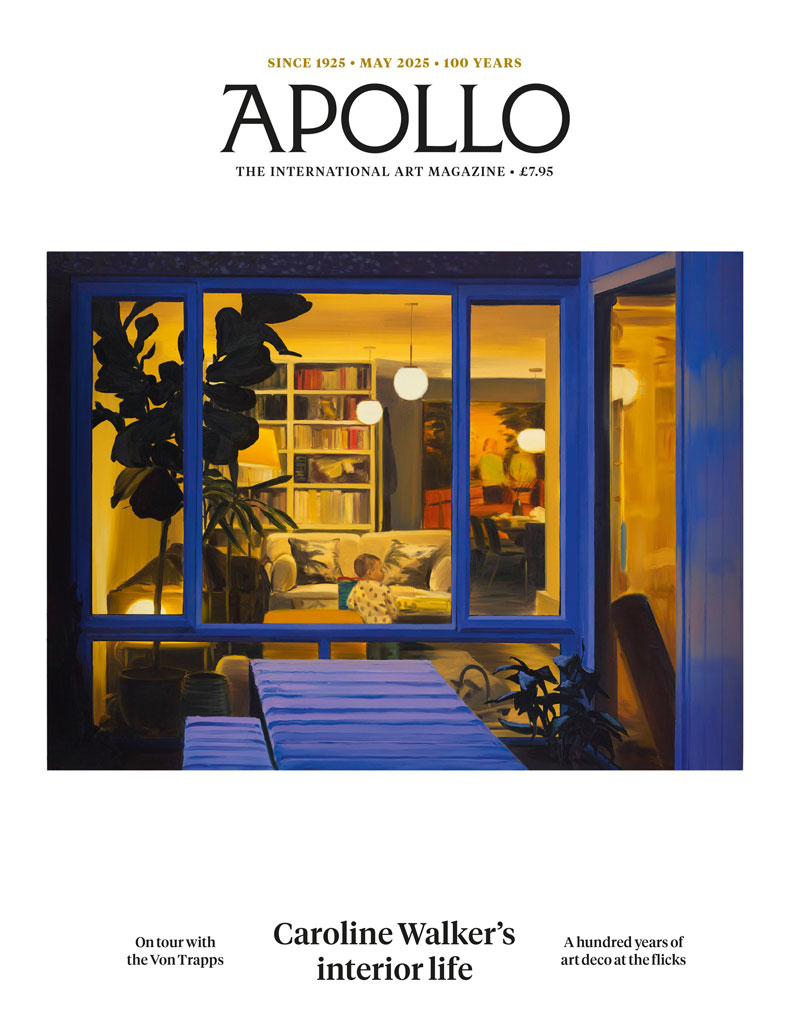Renato de Albuquerque bought his first piece of Chinese export porcelain in the Portobello Road in London in the early 1980s. Four decades and some 2,600 acquisitions later, the Brazilian collector’s world-class holdings of primarily Ming- and Qing-dynasty export wares are at the heart of a new foundation that places the art of ceramics – past, present and future – centre stage. For the Albuquerque Foundation, which opened in Sintra in Portugal last month, aims to do more than to preserve and interpret a core collection. Through exhibitions focusing on established and emerging artists, as well as educational and residency programmes, it intends to transform that collection into a living – and life-affirming – resource for members of the public, scholars and artists alike.
When I first met Dr Albuquerque in 2019, there had been some discussion about the future of the collection and a suggestion of a foundation. At the time, the collector was uncertain, wary of any ego-driven project. ‘I was also reluctant to impose a burden on my family,’ the unassuming and still sharp 97-year-old explained to me recently. ‘My mother Teresa and I twisted his arm,’ interposes his grand-daughter, Mariana Teixeira de Carvalho, with a fond smile. ‘We felt we had an obligation to share a collection that could never be recreated again.’ As a former human-rights lawyer who moved into the contemporary art world in 2009, it is Mariana, the co-founder of the Albuquerque Foundation and chair of its board, who had the vision to create what she describes as ‘an environment that honours the collection but also keeps it moving – that keeps it oxygenated’. A blast of oxygen was certainly provided by the American multidisciplinary artist Theaster Gates, whose solo show and performance was a coup for the inauguration for the contemporary exhibition space. Further blasts will follow, with upcoming residencies open to artists, writers, thinkers or scholars. ‘As long as their work involves ceramics, they will be welcome here,’ Teixeira de Carvalho insists.

The entrance of the Albuquerque Foundation in Sintra. Photo: Francisco Nogueira
In 2019, my interview for Apollo took place not in the collector’s home in São Paulo, but on the quinta in the verdant hills of Sintra acquired by Albuquerque as a family retreat when his construction and development company expanded its activities to Portugal in the 1980s. The Quinta de São João was the obvious location for the foundation – and not only because of its proximity to Lisbon and the popularity and intrinsic charm of the landscape, which is a UNESCO World Heritage Site. It was the Portuguese who had opened up the sea routes to China and dominated the early trade in what was known as ‘white gold’, a material previously unknown and then highly prized in the West. In the first half of the 16th century, they commissioned the so-called First Orders of porcelains made specifically for the export market; these form the core of Albuquerque’s collection.
One of the most impressive aspects of the project in Sintra is how the Brazilian architectural practice Bernardes Arquitetura has maintained the integrity of this simple, traditional and azulejo-embellished 18th-century house while transforming its interiors into a restaurant and bar, a shop to support contemporary ceramic art and a selection from Dr Albuquerque’s vast specialist library, housed in his former study. Three residency spaces fill the floor above. It was even more of a challenge to integrate the house with a state-of-the-art modernist museum building that almost abuts it. Its broad-brimmed hat of a roof generously shades the area between the two buildings and also – as we discover on the opening day – offers shelter from torrential rain.

A sweeping circular staircase leads visitors down to the permanent collection at the Albuquerque Foundation in Sintra. Photo: Francisco Nogueira
Visitors descend into the museum in a sweeping circle, as if walking down an inverted ziggurat by Frank Lloyd Wright. The surprise here is that we are not completely underground in the kind of white-cube gallery suggested by the glass box above. Instead, we find large windows opening on to lush sloping gardens, while a soon-to-be constructed internal zen garden will bring the outside in. Wood-lined walls with free-standing display cases create airy spaces that Melanie Taylor, who designs exhibitions for the Whitney Museum of American Art, has conceived as free-flowing and flexible. Such a vast and surprisingly diverse permanent collection will allow for many avenues of exploration. The American scholar, Becky MacGuire, who is the foundation’s first guest curator, has chosen some 250 pieces to focus on the theme of encounters and connections. It was always the historical and cultural significance of these pieces that most intrigued Albuquerque, and not least the story they tell of global trade and the exchange of ideas that produced wholly new combinations of ceramic forms and motifs. This was, after all, the first truly international trade embracing Asian, Islamic, European, and North and South American markets. ‘These porcelains were commissioned by one country, executed in another, transported by a third and consumed by a fourth party. Before that it was simply countries trading goods the other one wanted,’ Albuquerque told me in 2019.
This complex web of influences is told through objects such as an engaging Tang-dynasty stoneware figure of a wide-eyed and bearded Sogdian merchant of around 625–75 who would have worked the caravan trade between China and Central Asia. His ewer suggests the grape wine that began to be imported into the country during the Tang period in quantity – along with foreign glass and metalwork, Buddhism and Islam. All had an impact on Chinese production, as did the arrival of the Europeans in the 16th century. The strangeness of the ‘other’ is manifest, as are the misappropriations and misunderstandings of scripts and armorial devices, but there is also an underlying human commonality that makes these objects easily accessible today. While there are rarities galore to delight the aficionado, even the most museum-suspicious child could hardly fail to relish a bug-eyed feeding crab. Well-observed and lavishly decorated in famille rose enamels around 1770, it was made to grace a European table as a butter dish.

Crab tureen on fixed stand (c. 1770), Qing dynasty, China. Courtesy Albuquerque Foundation
Meandering paths lead down to a pavilion for temporary exhibitions, which Teixeira de Carvalho intends as a space for artists not only to work in dialogue with the permanent collection but also to question and challenge it. Solo shows give voice to the silence of authorship surrounding these anonymous historical pieces, a voice which may also speak of the histories of colonisation and exploitation that surround it. it. For the foundation’s director, Jacopo Crivelli Visconti, Gates was the ideal artist for the first exhibition. The widely respected African-American artist and academic began by working in ceramics and studied pottery in Japan, before building a practice that is part performance, part installation and part social activism. He has coined the term Afro-Mingei to describe the craft-based traditions that have informed his work and underline the radicalism of how he chooses to position it. Gates’s show, built above a purposely blackened Tokoname ceramic tile floor, is also about the meeting of different artistic traditions. ‘I was honoured to be asked to think about clay in a place dedicated to clay,’ he explains after the opening. ‘My brief was to make a response to the collection,’ he paused. ‘What they did not say [but was implicit] was to “kick off the space so that it matters”.’ It certainly does.














![Masterpiece [Re]discovery 2022. Photo: Ben Fisher Photography, courtesy of Masterpiece London](http://zephr.apollo-magazine.com/wp-content/uploads/2022/07/MPL2022_4263.jpg)
Suzanne Valadon’s shifting gaze